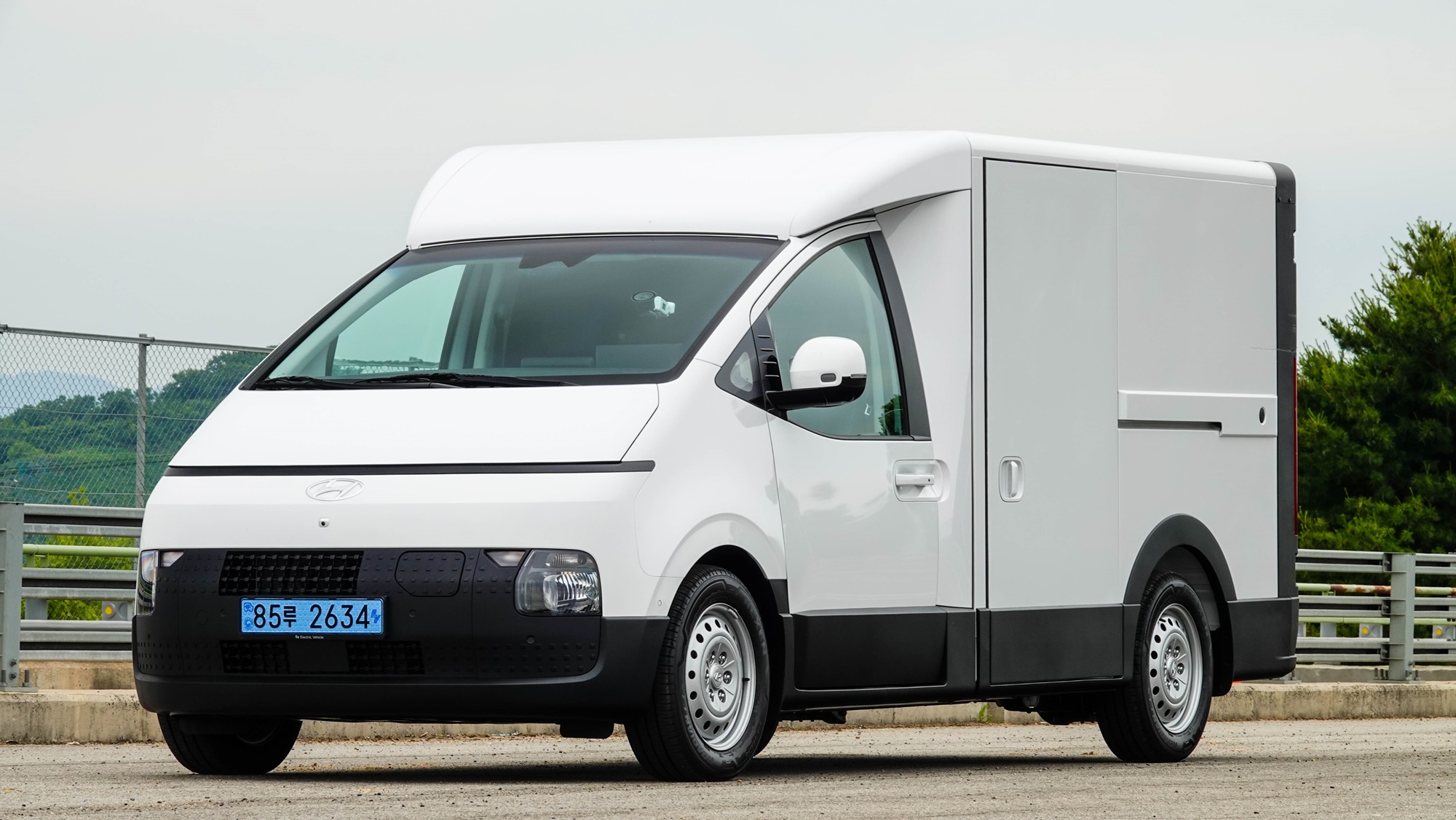
Hyundai has introduced a completely new vehicle. It’s called the ST1.
Is ST1 a name? It feels a bit awkward as it doesn’t fit Hyundai’s conventional naming schemes. According to Hyundai, it is “an optimized business platform that can be expanded based on purpose.” It seems like they’ve infused a lot of meaning into this, but it doesn’t hit home directly.
If you describe it as “a vehicle that can be anything,” it becomes easier to grasp. It can be used as a delivery van, converted into a camper, or transformed into a mobile café. It can serve as a police tactical vehicle, an emergency rescue vehicle, or even a space for growing vegetables. Perhaps Hyundai’s message through this vehicle is, “What kind of vehicle do you want? You can create it with the ST1.”
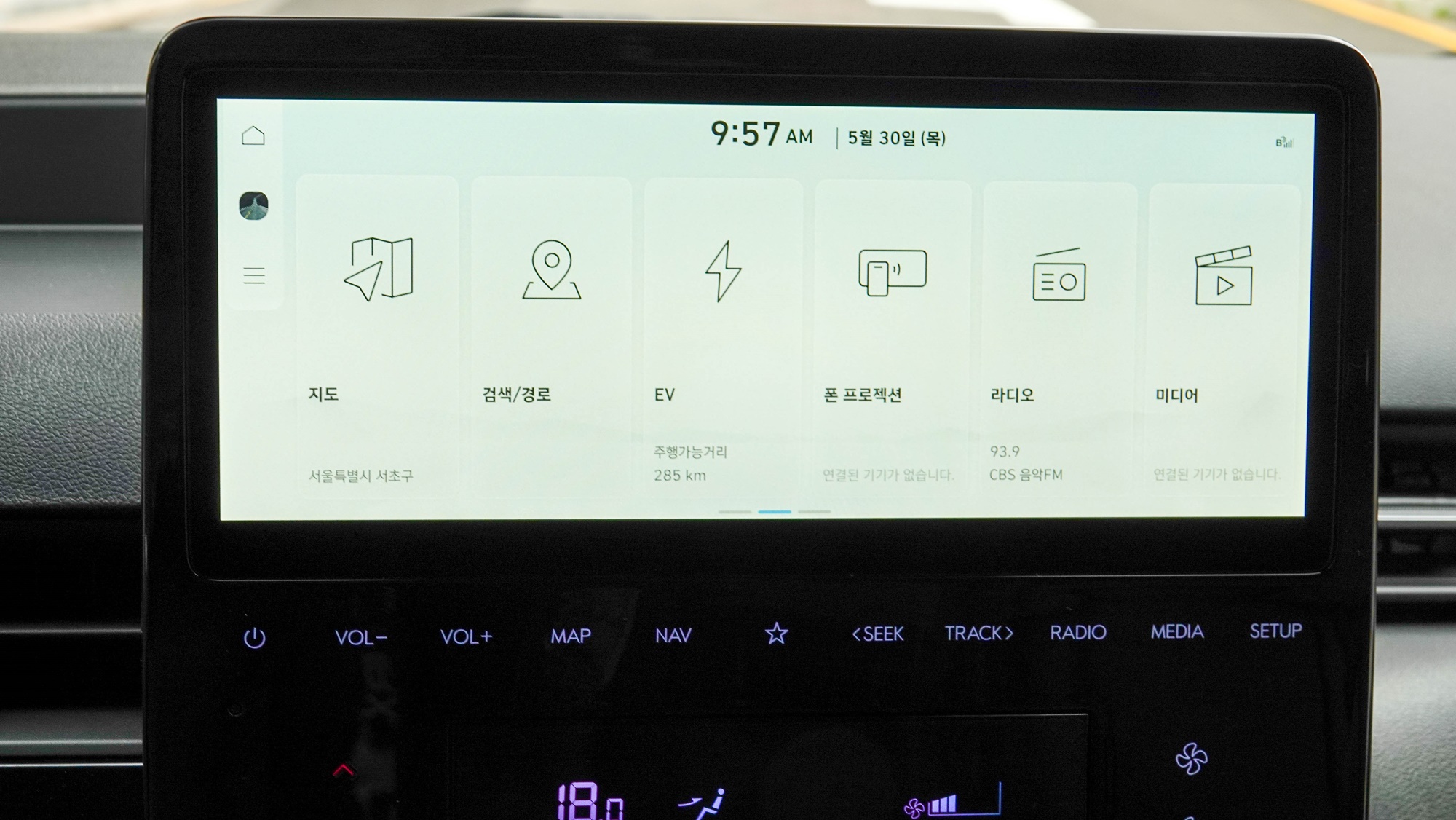
Another point to note is the software. With the open data API, third-party applications can be developed for use with this vehicle. This means applications for use in delivery can be created by third parties, not just Hyundai, and integrated with the ST1’s infotainment system. Users can receive information about the vehicle’s location, speed, ignition status, battery level, trip analysis data, door status, and charging plug connection. Based on this, necessary applications can be created and utilized.
This has significant implications, yet at its core, it’s a cargo vehicle. It must strictly fulfill its assigned role. As mentioned earlier, it has to be a “vehicle optimized for its purpose.” It’s far from being a flashy, performance-driven vehicle.
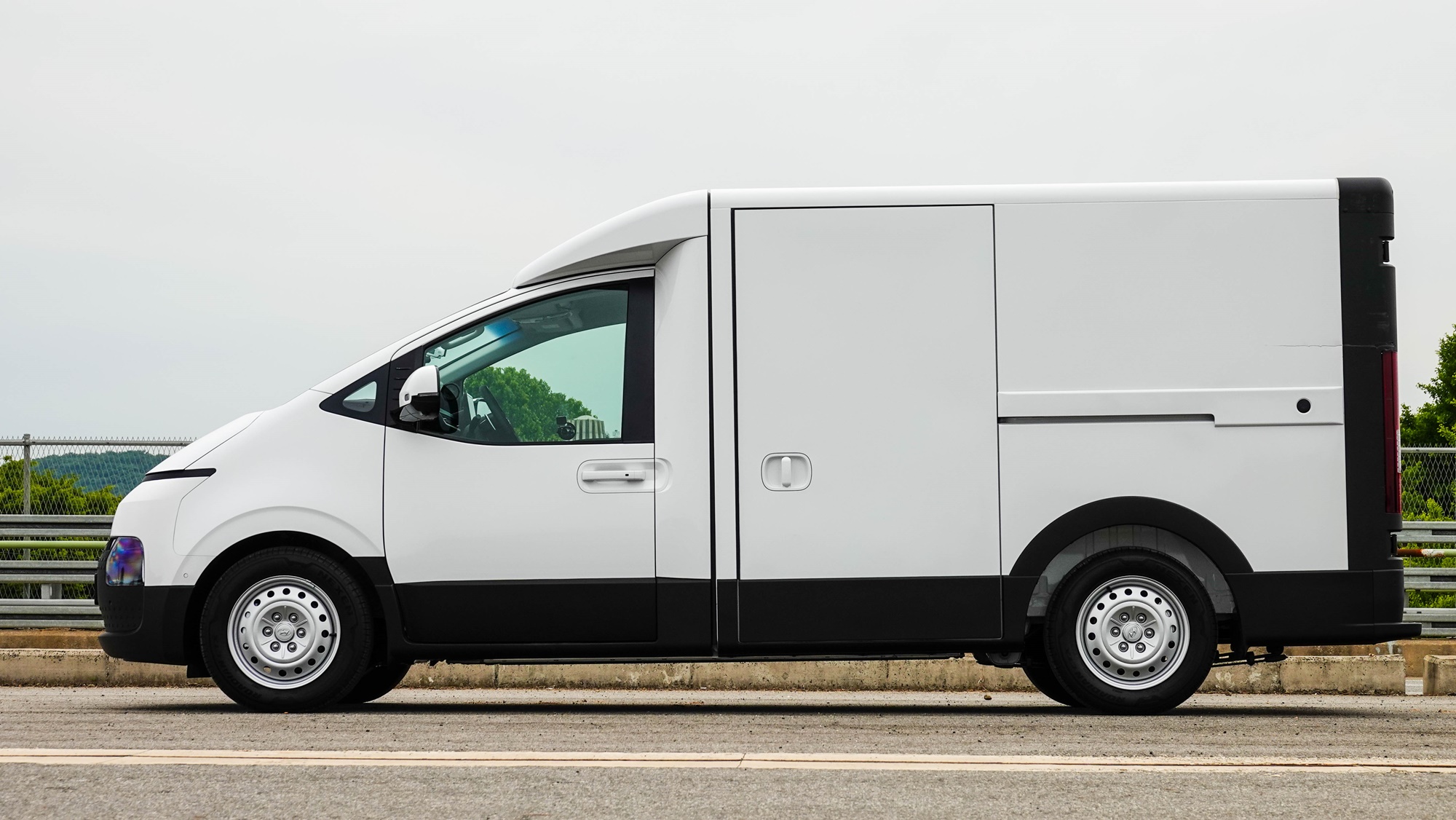
For now, let’s focus on its size. It measures 5,625mm in length, 2,015mm in width, and 2,230mm in height. You have to be very careful about the sides and back when turning in narrow alleys. Tight cornering can be nerve-wracking; it’s often safer to maneuver with some space, making turns in two or three movements.
It features a semi-bonnet type design with a 1.5 box style. The bonnet extends slightly, which is advantageous for crash safety. There is a storage area under the bonnet that could comfortably fit a pair of shoes (24.8 liters). The edges of the cargo area are protected with plastic material to prevent scratches.
The streamlined roof spoiler reduces air resistance. Several pins are applied between the A-pillar and the side mirrors. This could help reduce wind resistance and noise. Hyundai claims to have used soundproof double-glazed glass in the front and sides and sufficient sound-absorbing materials. At around 90 km/h, only a gentle wind noise can be heard.
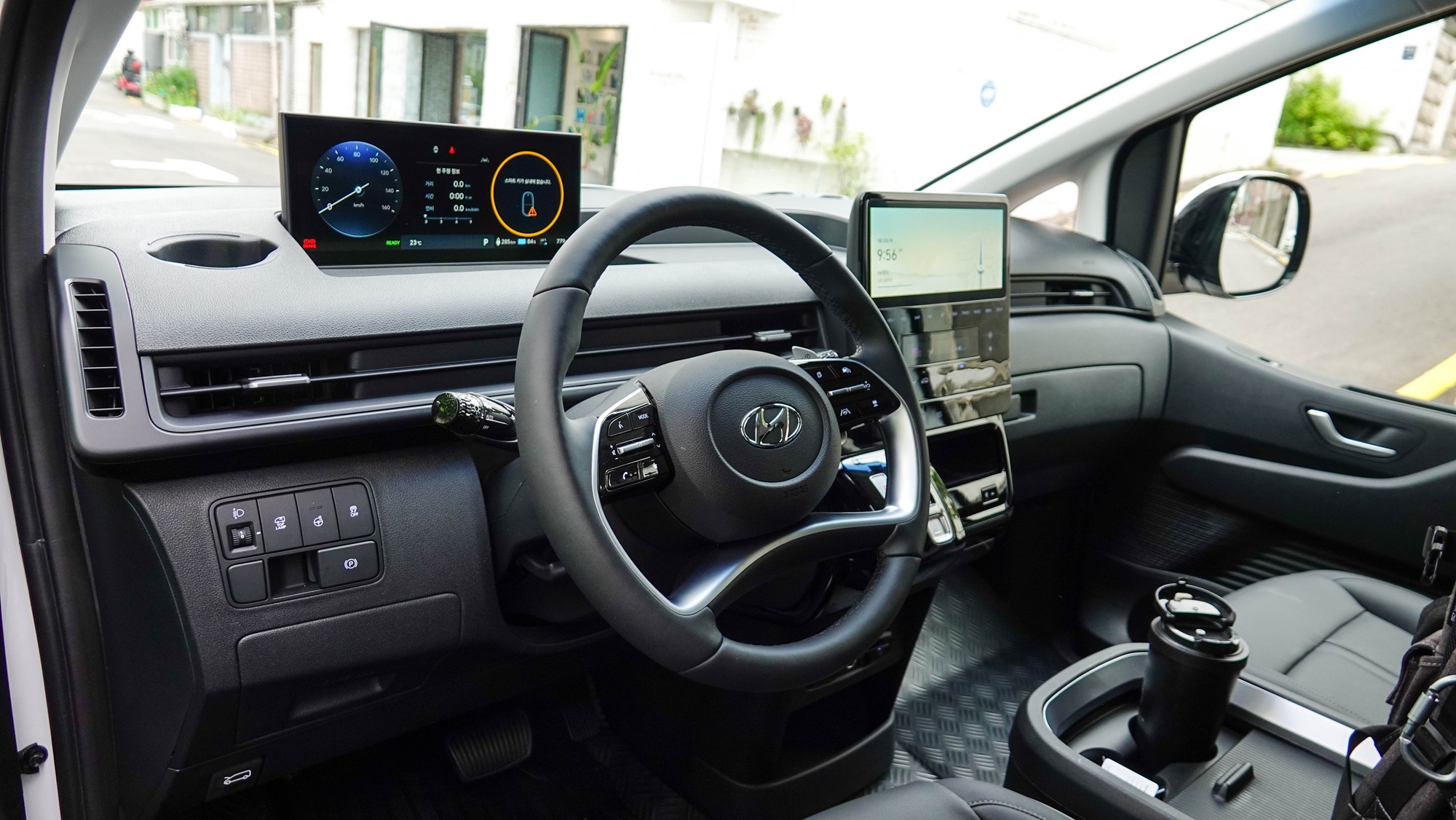
The ST1 is equipped with a 12.3-inch color LCD digital cluster and a 10.25-inch dedicated navigation display. Through the infotainment system, you can access, apply, and operate various information. Notably, it features a brake mode setting. As it’s a cargo truck that carries loads, it allows selection between normal and cargo brake modes.
The voice recognition system is capable of accepting commands in a conversational manner, but it doesn’t recognize them as well as typical passenger cars. Commands like “It’s hot,” “Turn on the heater,” or “Open the window” were not recognized. However, it easily processes commands for audio, destination settings, and provides answers with weather-related insights when asked about good car-washing days.
There is ample storage space inside. The doors have three storage compartments at the top, middle, and bottom, while spacious areas are provided in the center console, lower center fascia, and overhead console. With so many places to store items, it may be challenging to find things if not properly organized.
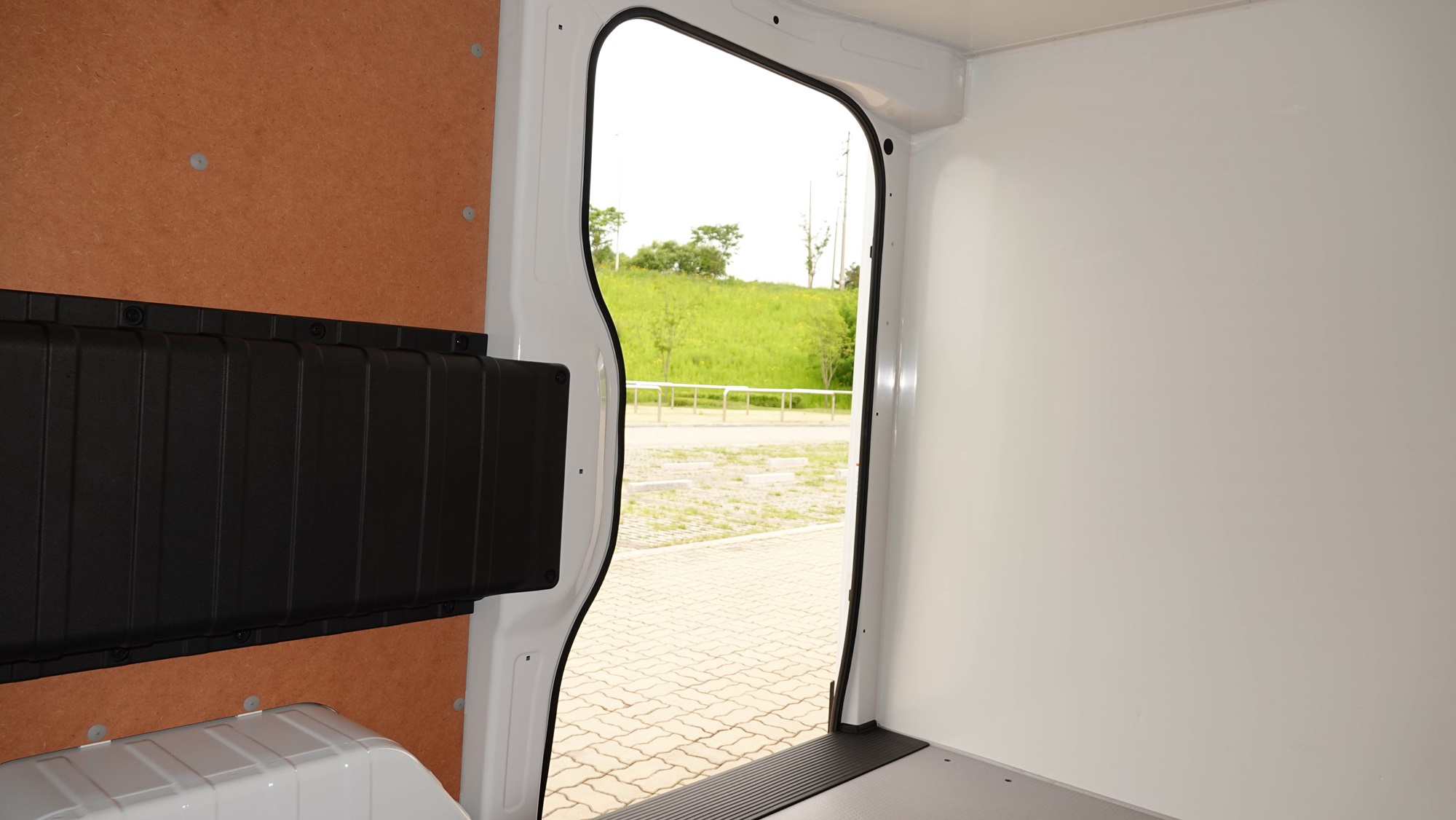
With its cargo truck design, the cargo area is crucial. You can open the cargo door directly from the driver’s seat. It opens with an electric sliding mechanism, and if you move away from the vehicle while holding the smart key, the opened door will automatically close. However, the opening faces the roadway rather than the sidewalk, so special care is needed when working.
The rear door is a twin swing door. It opens 90 degrees on both sides and can be secured in place. A step is provided for easy access to the cargo area, making it similar to climbing a low stair. The step is at a height of 380mm, while the cargo floor height is 495mm. It takes just two steps to reach the cargo area.
The cargo area has a height of 1,700mm, sufficient space for a person 172cm tall to stand without bending. You can conveniently move items within the cargo area with ease. The cargo area is 2,642mm long and 1,810mm wide. The wheelhouses intrude into the space, taking up room. There is adequate space to set up as a camper. Or through an organizational process based on individual needs, it can become a fantastic personalized vehicle. It’s space that can become anything.
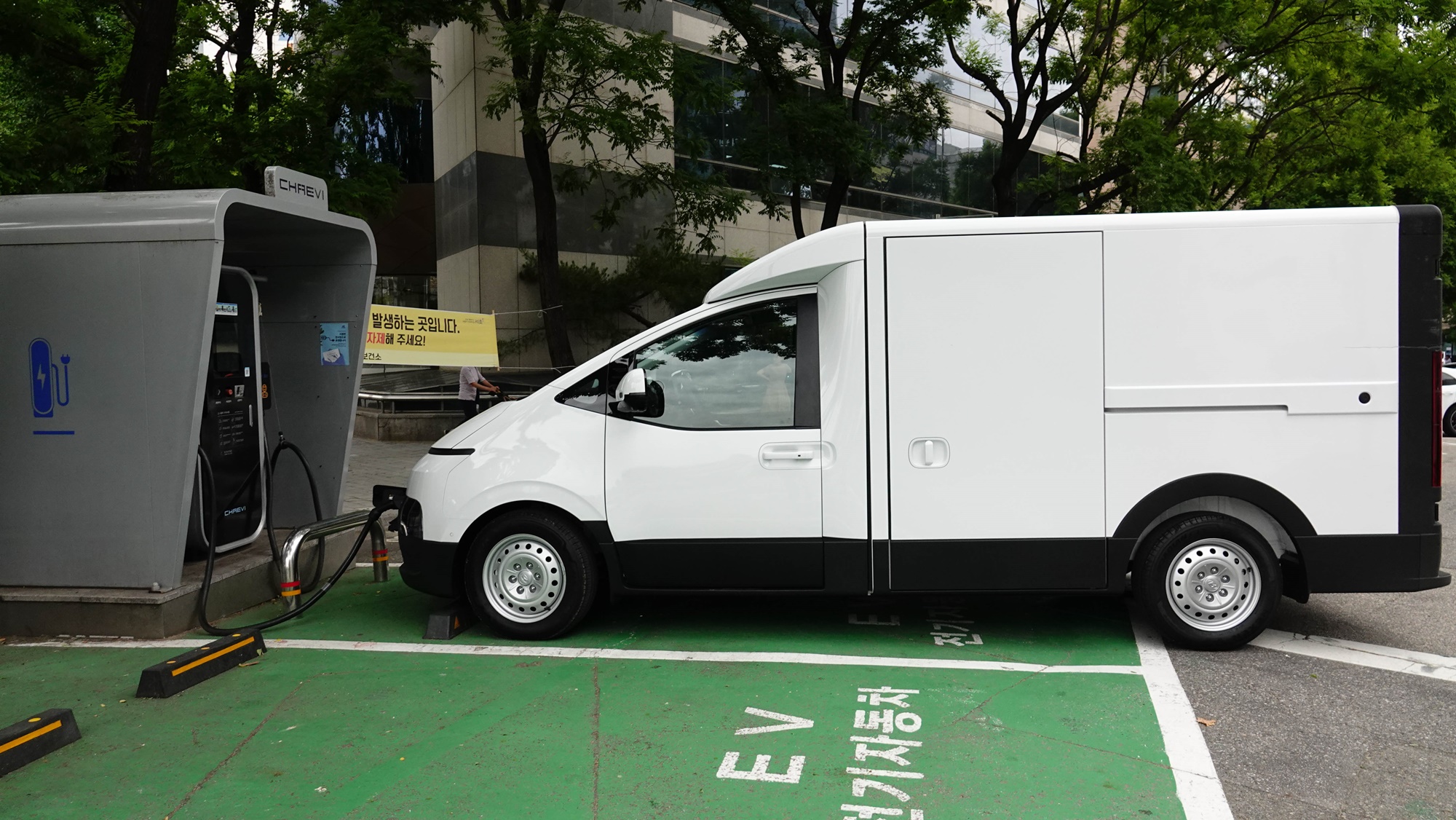
The ST1 is an electric vehicle. It utilizes a third-generation platform for internal combustion engines, adapted for electric operation. It is powered by a 76.1kWh lithium-ion battery, certified with a driving range of 317km on a full charge. Charging is recommended up to 80%, and if the battery level drops to at least 10%, the actual usable battery for the driver is about 70%. This implies that charging is needed approximately every 230km. If using a 350kW ultra-fast charger, it takes 20 minutes to charge from 10% to 80%.
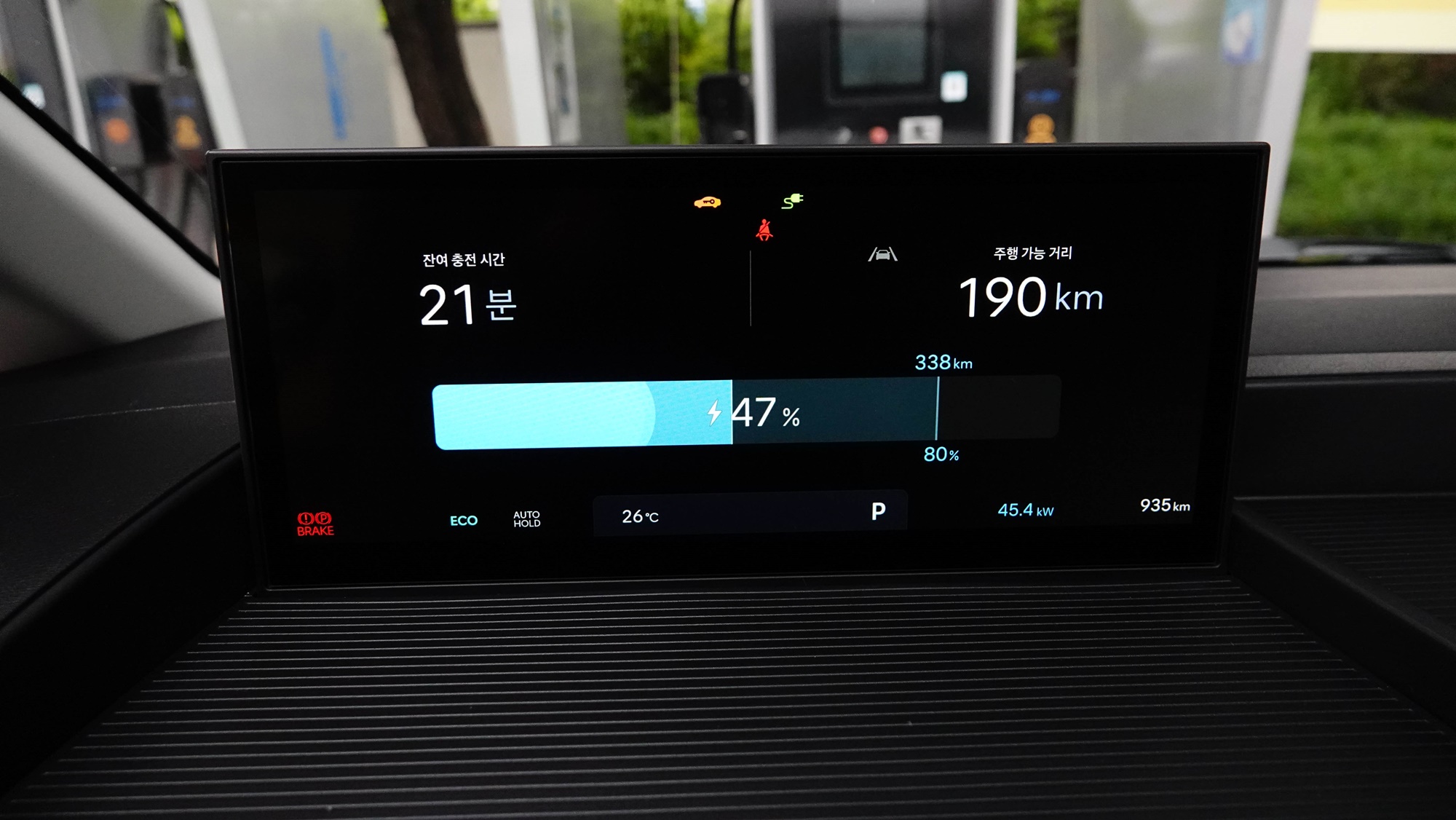
With a battery level of 47% and a driving range of 190km, I connected it to a fast charger. It took 14 minutes and 41 seconds to charge it to 80%. The amount charged was 29.99kWh, and the cost was 14,545 won. The driving range at 80% battery was 333km. The motor has a maximum output of 160kW and a maximum torque of 350Nm.
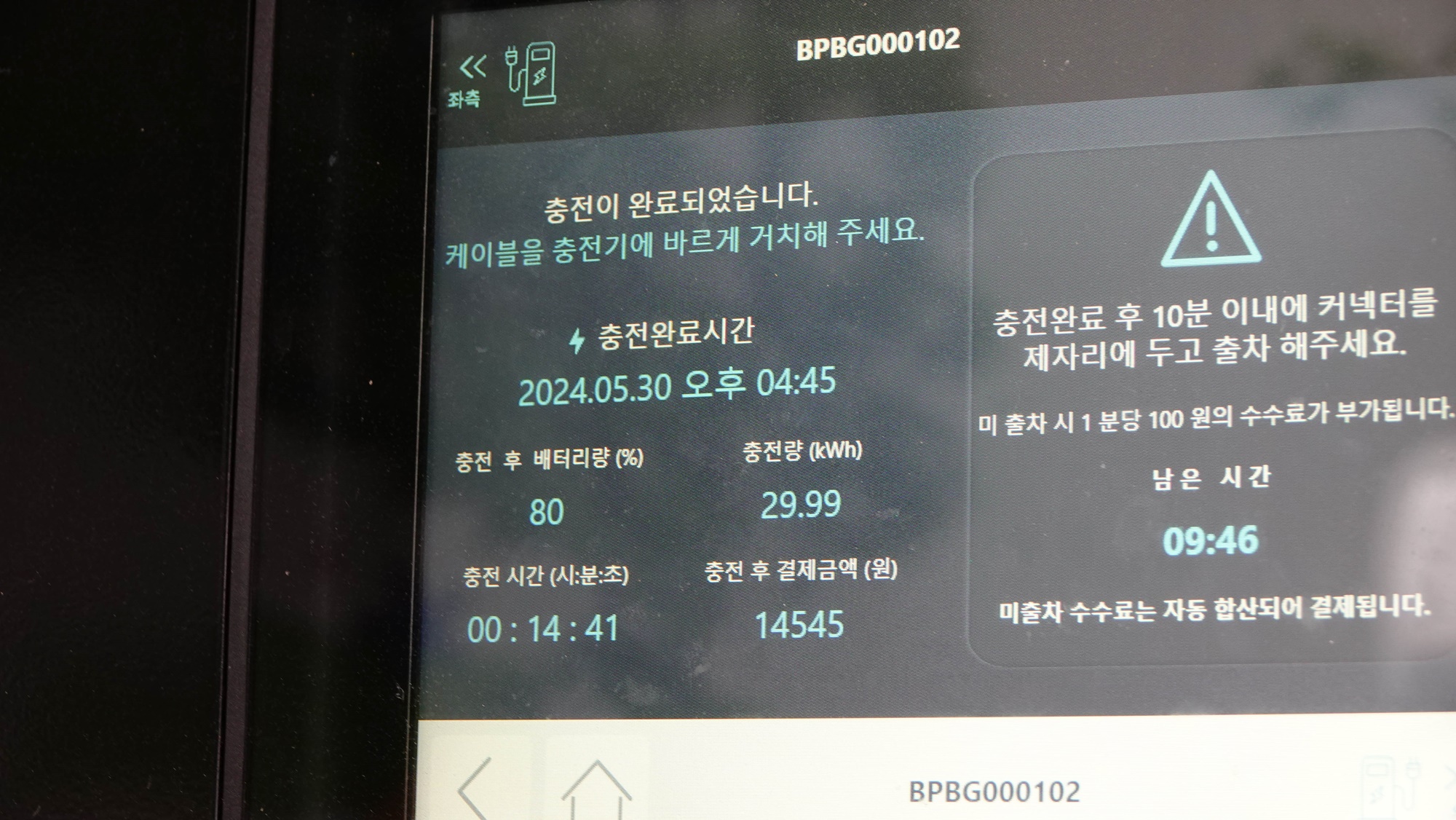
The smart regeneration system is applied. This system controls the regenerative braking. With paddles located under the steering wheel, users can manually adjust regenerative braking levels between 0 to 3. They can also choose ‘Auto.’ By selecting the strongest setting, ‘Max,’ it allows for I-Pedal driving, solving acceleration and deceleration with one pedal but requiring some driving discomfort in return. Pulling the paddles continuously gives the effect of braking. Various ways are available to enjoy the driving experience.
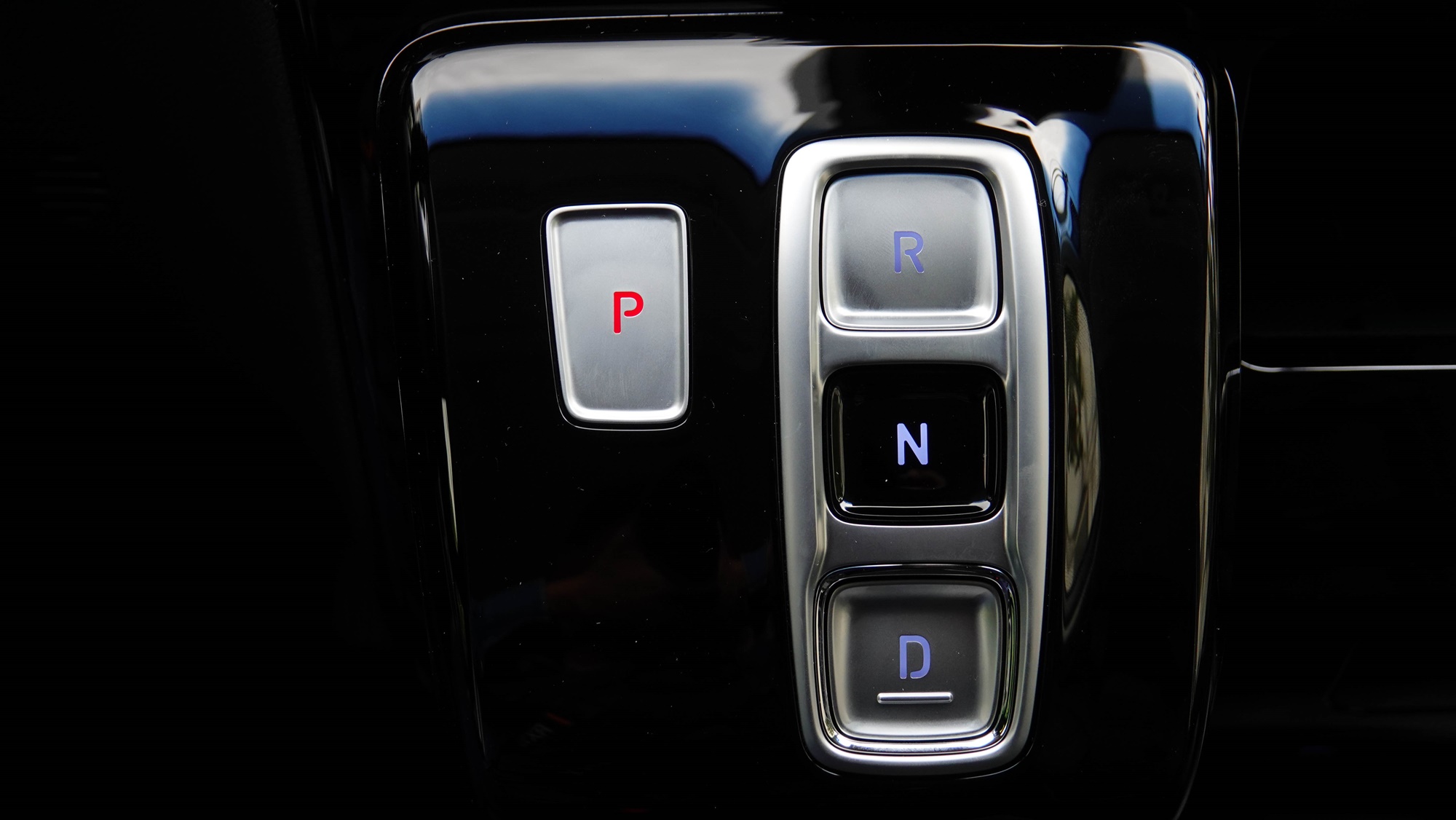
The cargo model features a ‘smart drive ready’ function. When the driver sits in the seat, a sensor recognizes this and prepares the vehicle to move. This means there’s no need to push the start button. With the smart key in your pocket, just sitting in the driver’s seat and placing the gear lever in D while pressing the accelerator will make the vehicle move.
The cargo area blocks the rear view. That’s why there’s no rearview mirror. Instead, it shows a real-time rear view captured by a camera on the navigation monitor.
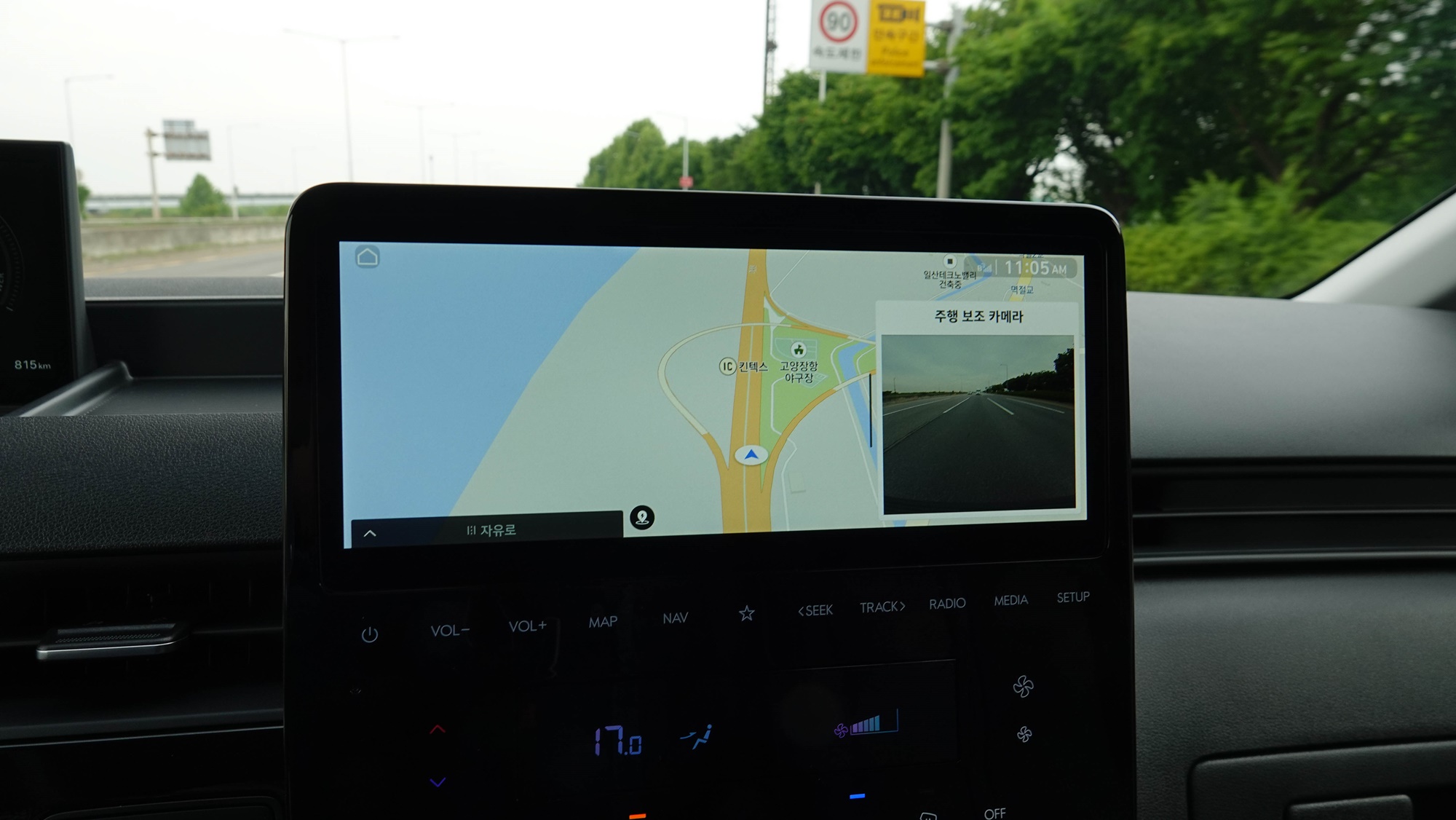
It has a V2L functionality that allows the use of home appliances with 220V electricity. This feature is significant in broadening the capabilities of electric vehicles.
Remote smart parking assistance allows the driver to use the smart key outside the vehicle to move it forward or backward. One might wonder if such a feature is necessary for cargo vehicles, but considering the nature of cargo trucks, this could actually enhance convenience. At any rate, it’s great for drivers as it offers many more choices.
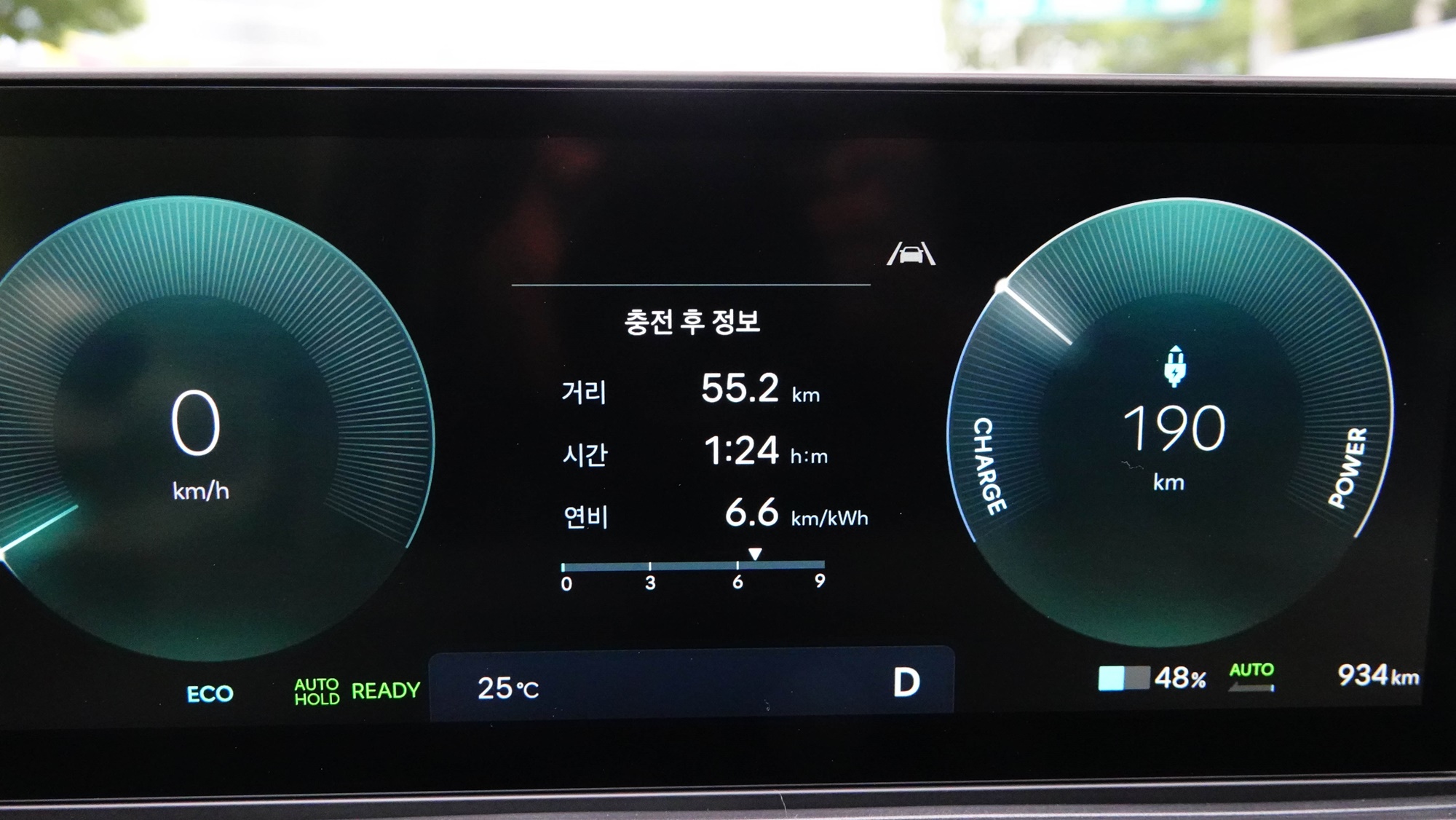
The certified fuel efficiency is 3.6km/kWh, but an actual test running from Paju to Seoul (55km) yielded a fuel efficiency of 6.6km/kWh. Since it traveled empty, the efficiency will likely decrease with cargo in the back, but it should easily cover the certified combined rating.
The selling price based on the cargo variant is ▲Smart 59.8 million won ▲Premium 63.6 million won. If you qualify for the eco-friendly vehicle purchase subsidy, a reduction of 15 million won can be applied based on the Seoul standard. This means you can purchase the Smart trim for approximately 44.8 million won.
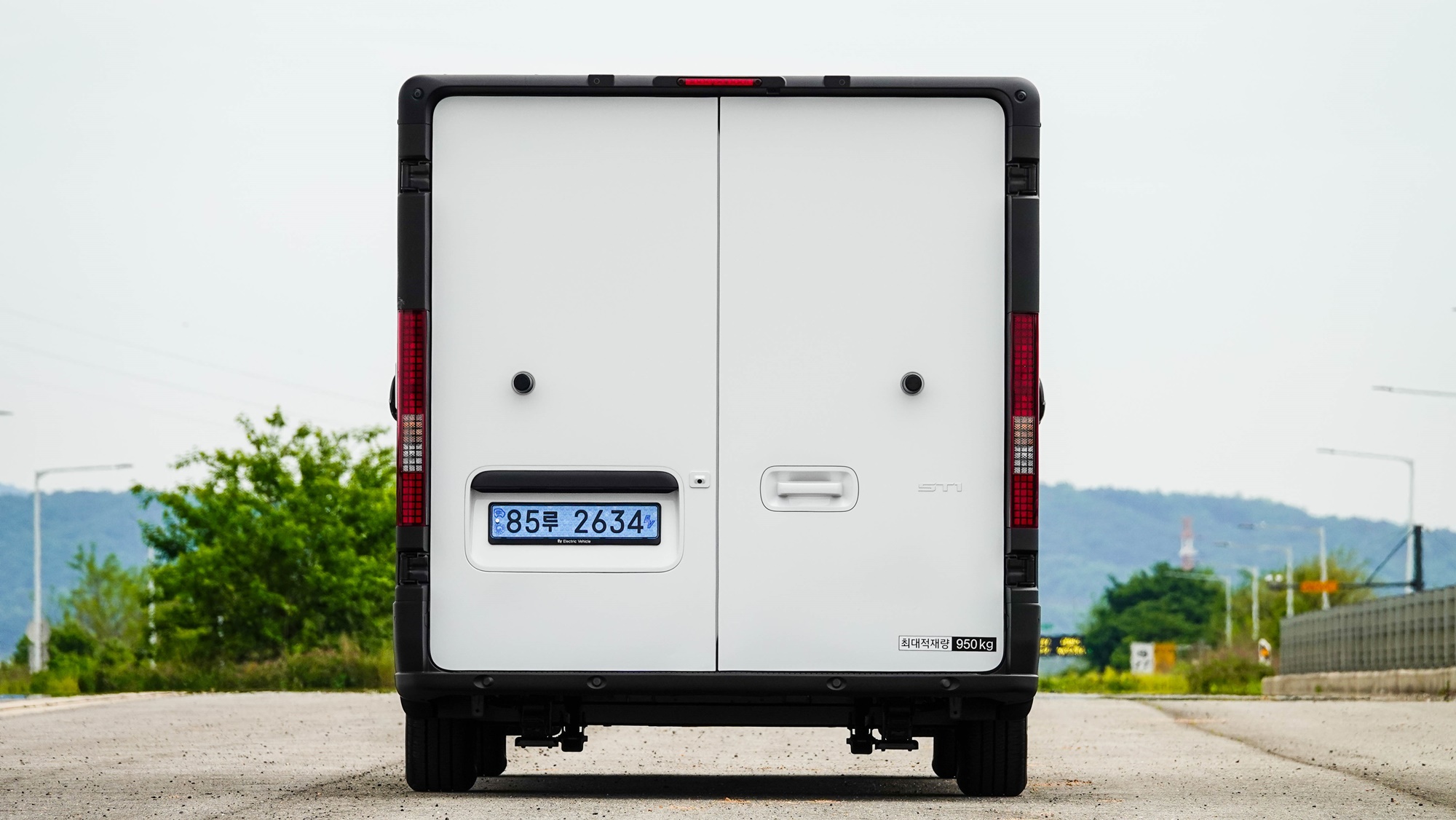
Jong-Hoon Oh’s blunt feedback:
The exterior paint conditions of the cargo area show some bulging parts at intervals. These protrusions become visible in backlight. The same goes for other test vehicles. For picky consumers, this might be a significant issue upon delivery. Creating unnecessary friction could arise if this part isn’t sufficiently explained to the consumer from the start.
The rear view captured on the navigation monitor makes approaching vehicles appear very small. Despite being equipped with a wide-angle lens, the display shows a miniature view, only making the following cars visible once they are right behind the vehicle. Perhaps using a standard lens instead would be better.
Jong-Hoon Oh yes@autodiary.kr

